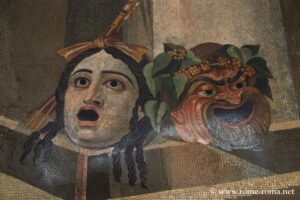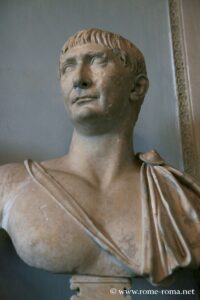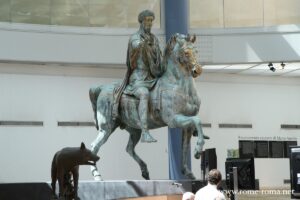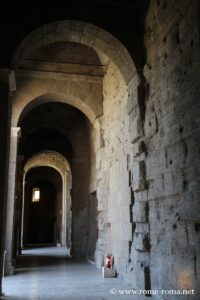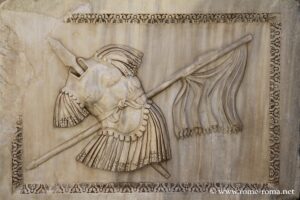 The Capitoline Museums, or *Musei Capitolini* in Italian, are located in the palaces on Capitoline Hill—namely the Palazzo Nuovo and the Palazzo dei Conservatori. They are the first museum in Rome to visit for anyone interested in Roman antiquity. Their vast collections, largely dedicated to antiquity, house many masterpieces, including statues and archaeological artefacts, as well as an art gallery with renowned paintings.
The Capitoline Museums, or *Musei Capitolini* in Italian, are located in the palaces on Capitoline Hill—namely the Palazzo Nuovo and the Palazzo dei Conservatori. They are the first museum in Rome to visit for anyone interested in Roman antiquity. Their vast collections, largely dedicated to antiquity, house many masterpieces, including statues and archaeological artefacts, as well as an art gallery with renowned paintings.
Historical overview
The origins of the museum’s collection go back to 1471, when Pope Sistine IV donated bronze statues to the Romans. Subsequently, the collections were greatly enriched through archaeological excavations in Rome and the Vatican, as well as acquisitions such as the Albani collection. In 1734, in the Palazzo Nuovo, Pope Clement XII founded the world’s first public museum.
In 1749, Benedict XIV inaugurated the picture gallery in the Palazzo dei Conservatori, which houses paintings by prestigious masters such as Caravaggio, Veronese, Tintoretto, Titian and Van Dyck. It was toward the end of the 19th century that the archaeological collections truly expanded, notably through excavations made during the development of new districts outside the Aurelian Walls.
Description of the museums
The two palaces housing the Capitoline Museums are located on the Capitoline Hill, flanking the Senatorial Palace (Palazzo Senatorio). They are connected by an underground gallery running beneath it, which contains the Lapidary Gallery. That gallery passes through the ancient Tabularium and offers splendid views over the Forum, visible through its monumental arches.
Palazzo Nuovo
The Palazzo Nuovo has changed little since the 18th century, housing a rich collection of ancient sculptures, mostly originating from Rome’s great families. Highlight pieces include busts of philosophers and emperors, reflecting the importance of thought and power in Roman art, with famous works such as those of Seneca and Marcus Aurelius.
The Philosophers’ Hall displays marble busts of emblematic figures of Greek philosophy—such as Socrates, Plato, and Aristotle—who influenced intellectual and cultural thought in ancient Rome.
The Emperors’ Hall, located on the first floor, houses a vast collection of busts and statues of Roman emperors—such as Tiberius, Claudius, and Augustus—illustrating the imperial ideology of the time.
Among other notable works are the statue of the Dying Gaul, the Venus of the Capitol, and the large aquatic statue of Marforio, one of Rome’s famous “talking statues,” located in the museum courtyard.
Palazzo dei Conservatori
The Palazzo dei Conservatori, for its part, preserves the original apartments’ rooms, decorated with frescoes depicting historical episodes of Rome. It also houses major pieces of ancient sculpture, including bronze works of the Capitol, such as the famous *Capitoline She-wolf*, the *Spinario* (“Thorn‑puller”) and the *Capitoline Brutus*.
On the first floor, a large glazed hall displays the original bronze equestrian statue of Marcus Aurelius, a copy of which stands in the centre of the Capitoline Hill.
In the basement are also visible remnants of the Temple of Jupiter Capitolinus and a section dedicated to the history of Capitoline Hill since its origins.
The adjacent rooms display works from the Horti dell’Esquilino (Gardens of the Esquiline), as well as other precious collections.
On the second floor, the Capitoline Picture Gallery houses paintings ranging from the late Middle Ages to the 18th century. Among the masterpieces are works by Caravaggio (notably *The Fortune Teller* and *Saint John the Baptist*), a large canvas by Guercino depicting *The Burial of Saint Petronilla*, as well as works by Guido Reni, Pietro da Cortona, Veronese, Tintoretto and Titian.
Tabularium Gallery
The gallery connecting the two palaces runs through the ancient Tabularium, a symbolic Roman building that once served as Rome’s public archives. Now part of the museum route, this structure offers visitors spectacular views of the Roman Forum.
It houses a collection partly formed from remains discovered during excavations of the Roman Forum and surroundings, including inscriptions and lapidary reliefs (on bronze tablets and stelae), sculptured fragments from public buildings, monuments and architectural elements (statue bases, columns, parts of ancient temples), and personal objects.
Palazzo Caffarelli‑Clementino
The Palazzo Caffarelli‑Clementino houses the Capitoline coin collection, which includes coins, precious stones and jewellery of great value. It also hosts temporary exhibitions.
→ See on the official site: complete tour of the Capitoline Museums’ rooms
Conditions of visit and information
| Tickets to visit the Capitoline Museums | |
| Hotels, rooms and apartments near the monument |
Opening Hours and Visits
|
More Information, Links
|
Articles on the Capitoline Museums
- Capitoline MuseumsThe Capitoline Museums, or *Musei Capitolini* in Italian, are located in the palaces on Capitoline Hill—namely the Palazzo Nuovo and the Palazzo ...
Map and address
Address : Piazza del Campidoglio, 1, 00186 Roma RM, ItalieIf you see this after your page is loaded completely, leafletJS files are missing.

